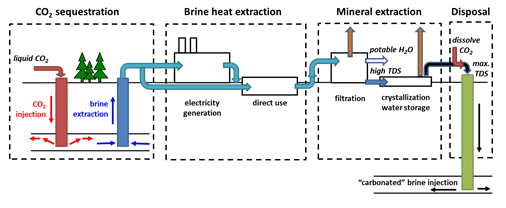West Virginia University and the Huaneng Clean Energy Research Institute signed an agreement in Beijing, China, on Tuesday to conduct a joint study on the use of a deep, saline aquifer for the long-term storage of carbon dioxide from an advanced coal technology power plant known as the GreenGen project.
Capturing and storing carbon dioxide is one strategy for reducing the amount of the greenhouse gas released whenever fossil fuels are burned to generate electricity.
The “Tianjin Enhanced Water Recovery Project” will be led by Paul Ziemkiewicz, director of the West Virginia Water Research Institute at WVU. Scientists from Los Alamos National Laboratory, Lawrence Livermore National Laboratory and the University of Wyoming will be collaborating on the project.
Like FutureGen in the U.S., GreenGen is a demonstration project to develop high tech, coal-based power plants. GreenGen combines integrated gasification combined cycle technology to produce power and hydrogen and is coupled with carbon capture technology to trap the greenhouse gas.
The captured carbon dioxide would be injected into a saline aquifer at the site. The scientists will be conducting a pre-feasibility study of the saline formation below the GreenGen plant located in Tianjin, China, to determine what further analysis shou ld be conducted to determine the efficacy of water and carbon management in the formation.
ld be conducted to determine the efficacy of water and carbon management in the formation.
Deep saline aquifers are found more than one-half mile below the Earth’s surface, far deeper than fresh water sources. The aquifers have inter-connected spaces between rock grains into which carbon dioxide would be injected. The rock layers above the aquifers are dense enough to permanently trap the carbon dioxide underground.
“This project will evaluate the potential for removing the saline water to make more room for carbon dioxide, while treating the water so that it can be used for drinking water or agriculture and industrial uses,” Ziemkiewicz said. Known as active reservoir management, the process would also better control the movement of the greenhouse gas within the targeted geological formation.
The U.S. team will work with Chinese scientists to identify geological conditions, plant requirements, and costs.
James Wood, director of the U.S.-China Clean Energy Research Center Advanced Coal Technologies Consortium at WVU, signed the agreement on behalf of WVU. Shisen Xu, President of Huaneng Clean Energy Research Institute, signed for the Chinese research organization. The U.S.-China Clean Energy Research Center is funded by the U.S. Department of Energy.
“This opportunity, facilitated by the U.S. Department of Energy’s U.S.-China Clean Energy Research Center, will showcase WVU’s water management research capabilities and help develop important criteria related to safe, permanent carbon storage which is an important step in the cleaner use of fossil fuels,” Wood said.
“This is great example of how energy-related research at WVU is relevant globally as well as locally,” said Fred King, WVU vice president for Research.